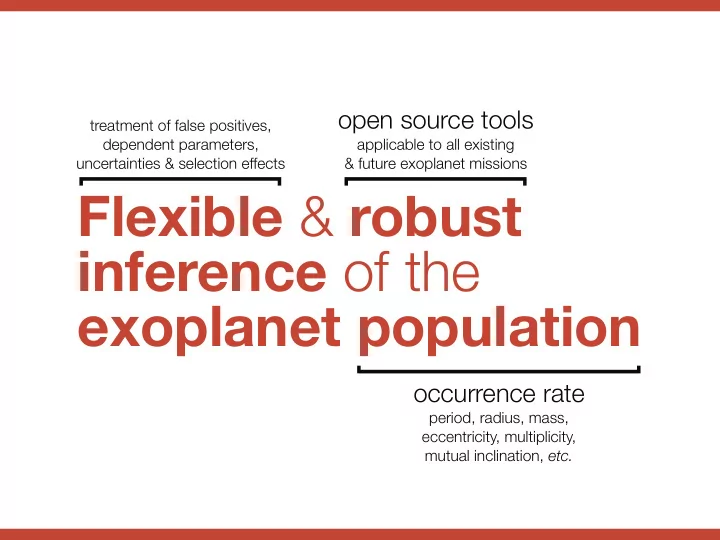

open source tools treatment of false positives, dependent parameters, applicable to all existing uncertainties & selection effects & future exoplanet missions Flexible & robust inference of the exoplanet population occurrence rate period, radius, mass, eccentricity, multiplicity, mutual inclination, etc.
population θ noisy observations "true" selection w k x n,k S n physical effects parameters systems k surveys n Probabilistic modeling can be used to combine surveys , take uncertainties into account, and measure the effects of false positives
Single transits and long-period radial velocity measurements only place weak constraints on the parameters of the planets but, with probabilistic modeling, this can be taken into account & these can still be used for population inference . time since transit [days] − 2 − 1 0 1 2 0 − 1 rel. flux [ppt] − 2 p (log period) 100 1000 period [days] Think how useful this will be for K2 and TESS !
For systems with multiple planets , the parameters are no longer independent . 3000 the observed 2500 don't forget about zero! KOI multiplicity number of stars distribution 2000 1500 1000 500 0 0 1 2 3 4 5 6 7 observed number of planets per star Other methods of population inference— approximate Bayesian computation or likelihood-free inference —might be necessary!
Recommend
More recommend